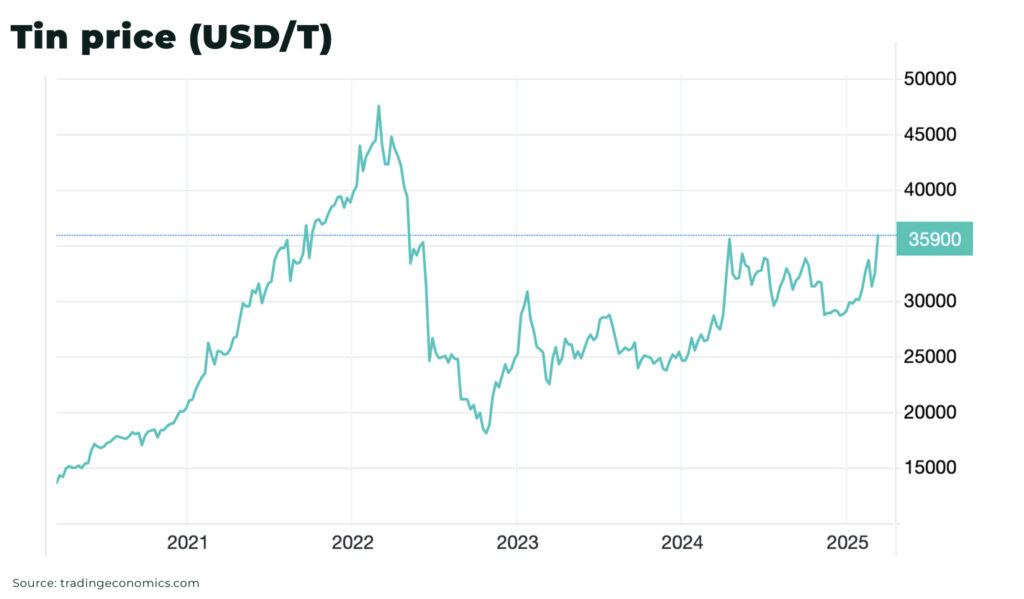Subscribe for Investment Insights. Stay Ahead.
Investment market and industry insights delivered to you in real-time.
The price of tin has surged to a three year high after Alphamin Resources announced the temporary closure of its Bisie tin mine in Walikale District, North Kivu Province of east-central Democratic Republic of the Congo.

The decision came after insurgent militant group Rwanda-backed M23 rebel group, advanced westward towards the mine’s location. Alphamin has evacuated all operational mining personnel, leaving only essential staff for care, maintenance, and security of the property.
The Bisie mine, the third-largest tin mine globally, produced approximately 17,300 tonnes of tin-in-concentrate in 2024, representing about 7% of global mined tin supply, with the world’s highest-grade ores.
There is currently no exact timeframe for when the mine will reopen:
“The Company is encouraged by the recent announcement that direct peace talks on the conflict are scheduled to be held in Angola on March 18, 2025. The Company will closely monitor events as they progress with a view to moving personnel back to the mine site and resuming operations when it believes it can safely do so. The Company will provide further updates when approriate”
More than 50% of tin is used as solder in circuit boards, essential for semiconductors, data centers, mobile phones, electric vehicle and batteries, as well as in solar panels — it is the solder that binds the technology revolution.
The International Tin Association estimates US$1.4 billion is needed to deliver 50,000 tons per year more tin by 2030, yet supply, instead of expanding, is tightening with global refined tin production in 2023 declining 2.1% from 2022 to 370,100t.
“This comes at a time of relatively low LME tin stocks, with LME on-warrant stocks totalling 3,500 tonnes on Thursday, down by 27% from 4,800 tonnes at the end of 2024”
— BMO Capital Markets said in a note

Our recent analysis on whether there enough tin supply to hold the tech revolution together:



















